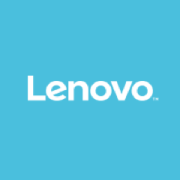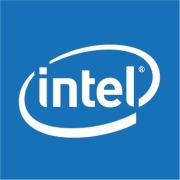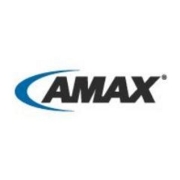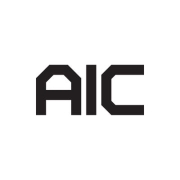Rack Servers are a type of computing platform designed to be housed in data center racks, offering scalability and efficiency for IT infrastructure. These servers are key for businesses with extensive data needs, allowing for streamlined management of resources.
Designed for optimized use of space, Rack Servers offer businesses a modular approach to building computing environments. They combine power, cooling, and connectivity into a compact form factor. Businesses can enhance performance by selecting the appropriate configurations based on workload demands. Real-time monitoring features and redundancy ensure high availability and reliability, making them an ideal choice for mission-critical applications. They are built to support enterprise-level tasks with reliability and ease of integration into existing systems, providing a foundation for cloud services and virtualization.
What features do Rack Servers offer?
What benefits and ROI should organizations expect?
Rack Servers are instrumental across industries such as finance, healthcare, and technology, where server consolidation, virtualization, and data-rich applications are prevalent. Financial institutions use them for their reliability and security, ensuring data integrity and compliance with regulations. In healthcare, robust analytics and processing power support patient care and administrative tasks.
Businesses benefit from Rack Servers by maintaining a flexible and responsive IT environment, enabling them to automate processes, handle intensive computational tasks, and store significant amounts of data securely. They allow organizations to align IT infrastructure with evolving business strategies.
| Product | Market Share (%) |
|---|---|
| Dell PowerEdge R-Series | 27.4% |
| HPE ProLiant DL Servers | 22.0% |
| Lenovo ThinkSystem Rack Servers | 15.2% |
| Other | 35.400000000000006% |




























You can often find rack servers in data centers because of the scalability they provide. Assembling the servers on racks also maximizes air flow and simplifies maintenance and diagnostics. If there is a problem, you can just slide the server out of the rack.
A type of rack server called a rugged rack server is often used in military and industrial applications. These servers are certified to military standards and stress-tested to work under extreme heat or cold, impact, high humidity, or vibration during transport.
One of the characteristics of rack servers is their convenience. IT personnel can slide them in and out of the server bay with ease. This feature enables technicians to swap parts if needed without the need for downtime.
The resources, services, and performance of the server will depend on the needs of a program or application that works on the server. Different use cases require unique server configurations and resources. For instance, a server installed in a remote military installation will require mobility, which a server installed in a commercial warehouse will not.
The number of servers a bay can hold will depend on the depth of the rack and its width. Most rack servers’ width is 19 inches, to fit a standard 19-inch server rack configuration.
Industry racks come in 19-inch, 23-inch and 24-inch widths. The height of the server bays is measured in rack units. A rack unit is 1.75 inches, and the most common rack heights are 42 and 44 units. Since this is equivalent to 77 inches of usable space, it allows you to stack a lot of servers.
Blade servers are the smallest in terms of size. They consist of a thin, lightweight, modular computer that can be positioned upright without taking much space. They often sit inside racks in what is called “blade enclosures” or systems. Blade servers are smaller and more mobile than rack servers.
Blade servers are, like rack servers, slideable and can be swapped hot. As such, they can be easily scaled and upgraded. They also consume less power than tower and rack mount servers. The downside of blade servers is that they are limited in their expandability because of their small size.
As a general rule, servers are more expensive than consumer-grade computers. They are designed, built, and tested to a stricter standard, thus vendors can charge more. A rack server can go from $400 and upwards, depending on the chassis. A mobile chassis, like the ones used for military operations, can be $1000 or more.
Rack servers offer much greater storage capacity than blade servers but still in a small, stackable size. Their convenience makes them more in demand, hence they cost more.
Rack Servers are designed to optimize physical space within a data center, allowing you to stack multiple servers vertically and save floor space. Their modular structure facilitates easy upgrades and maintenance, which minimizes downtime and accelerates operations. The efficient cooling systems integrated into Rack Servers help to reduce energy consumption and costs, improving the overall efficiency of your data infrastructure.
What factors should be considered when choosing Rack Servers?Choosing the right Rack Servers involves considering your specific workload requirements. Assess processor capabilities, memory capacity, and storage options. Ensure compatibility with existing data center infrastructure and examine the scalability to meet future demands. Consider the energy efficiency ratings to keep operational costs manageable and evaluate the support and warranty offered by the manufacturer.
Are Rack Servers suitable for small businesses?Yes, Rack Servers can be a great fit for small businesses that anticipate growth because they offer scalability. They provide substantial computing power and storage capacity without taking up a large physical space. For small businesses transitioning from smaller server solutions, Rack Servers can deliver more reliability and support virtualization needs, which is beneficial for businesses with limited IT resources.
How do Rack Servers support virtualization?Rack Servers are ideal for virtualization due to their robust hardware capabilities. They allow you to efficiently run multiple virtual machines on a single physical server, maximizing resource utilization. The high processing power and abundant memory in Rack Servers ensure you can allocate sufficient resources to each virtual machine, leading to improved performance and streamlined management of virtual environments.
What maintenance practices are recommended for Rack Servers?To ensure optimal performance of Rack Servers, regular maintenance is crucial. Monitor system performance and temperature, and ensure adequate cooling to prevent overheating. Regularly update firmware and software to protect against vulnerabilities. Implement a structured cabling management system to prevent accidental disconnections. Schedule routine hardware checks and clean the server interiors to remove dust that could hinder performance.